However much I think I know, I continue to have truly humbling moments of realisation that there is yet so much to learn. After 25 years of honing my landscape technique according to all the conventional rules I returned to the classroom and after 5 years am seeing through new eyes, with the greatest revelation coming from a person who had never taken a photo before.
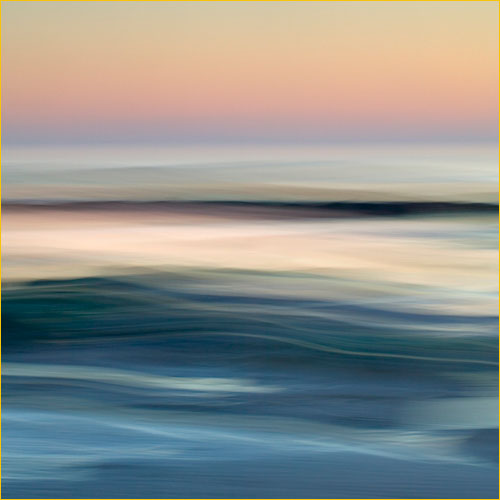
Reflecting on Light, Ardrossan, Scotland – ISO 50, f29, 0.6s, 70-200mm
My first lesson was to rethink my method of approach with respect to image capture – the catalysts a newly purchased Canon 1ds digital slr and giving up my job in favour of living in a campervan for a year to capture the "Inner Sense" of the landscape around me. The aim of this project was to try to express the atmosphere and soul of a location at a given moment in time. Armed with this underlying theme and purpose affected the way I considered the subject matter in the field from the outset of a shoot. Rather than shoot the “scene” I might find myself considering the detail and individual components of a location far more closely than I otherwise might.

Sundown, Dumfries & Galloway, Scotland – ISO 50, f25, 1s, 70-200mm
The ability to review composition and exposure and to instantly consider the impact of changes in shutter and aperture that came with the switch to digital proved to be formidable tools in extending my techniques into new areas, the technique exemplified in the image below. With the ability to download and review an image in the field (my campervan comes complete with inverter and computer) and return instantly with the knowledge gained was revolutionary to me at the time. I found myself working in increasingly small, intimate locations of a few hundred metres, often for days at a time, building towards the final image by developing an empathy with the location itself. This had a profound effect not only on technique but also on the type of image I began to capture, with movement and abstraction increasingly featuring in my compositions. (I should perhaps note that with the exception of these functions my digital camera might as well be a clockwork Nikon FM2 and I pay little attention to most of the little buttons that surround its fascia).
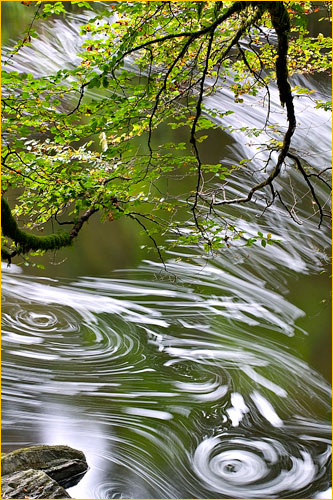
The Hermitage, Perthshire, Scotland 0 ISO100, f16, 13s, 90mm
Lesson two – a couple of years ago I was lucky enough to be invited to join Joe Cornish and Richard Childs, two of the most respected and experienced large format photographers in the UK, on a photography trip to Arran in Scotland. Influenced by knowledge of their work I found myself taking photos in a similar style to them for the next few weeks – a departure from my usual methods. I was pleased with the images I achieved and yet frustrated with myself for not expanding my own approach in favour of reproducing work similar to that of others. In doing so I learnt a fundamental lesson of personal creative thought, a reality check that highlighted and focussed my thinking in all subsequent work I have undertaken.
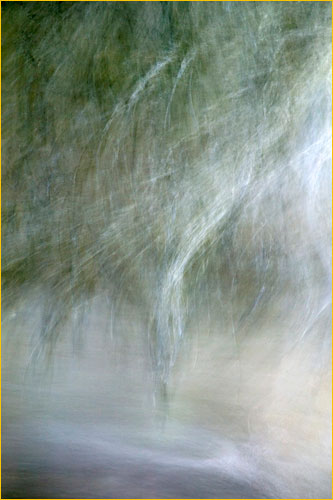
Water, Dumfries & Galloway, Scotland – ISO 50, f32, 0.3s, 70-200mm
This realisation also made me reconsider every technique I had learnt over 25 years and how that related to the look and feel of the final image. It also made me rethink and confirm the messages I was trying to impart in my work (something I now do on a regular basis).
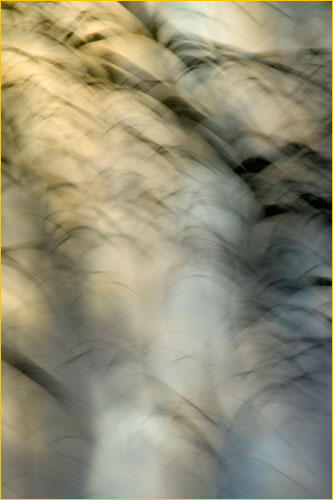
Through the Rowan, Galloway, Scotland – ISO50, f32, 1/13, 70-200mm
But Lesson Three was undoubtedly the most important, as at about this time I began teaching my partner Morag how to take photos. I would watch, exasperated, as she sometimes dismissed the apparent benefits of a tripod and blurred results ensued. I questioned her technique and reviewed the results, which she insisted she was pleased with.

The Riverbank, Galloway, Scotland – ISO 50, f32, 0.4s, 70-200mm
At first I ignored her words, but then… As I looked more closely I began to see shapes and forms I had always previously ignored. In doing to started seeing how one could maybe explore this concept further. I started to consider the image in an entirely different way as well as the techniques one would use to capture them. By doing so I realised that maybe this was exactly what I had been looking for.
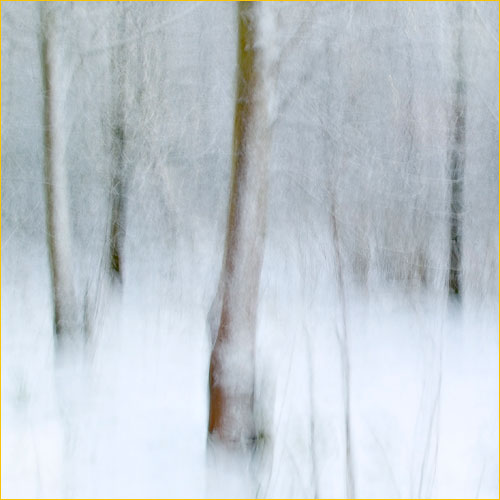
Trees in Snow, Dumfries & Galloway, Scotland – ISO 50, f32, 0.4s, 70-200mm
The results were almost instant and were truly inspirational. Whilst the essential photographic rules of light, exposure and composition were still absolutely essential to achieving any form of competent result, with the camera suddenly relieved of the constraints of the tripod it seemed to act more like a painter’s brush than a mere tool for capturing the image. Every day I was finding new subjects and methods of capture – changes in lens, shutter speed and aperture, type of movement to suit the subject and use of Neutral density filters and grads. With so many new ways of looking at the landscape it was like being back at school.
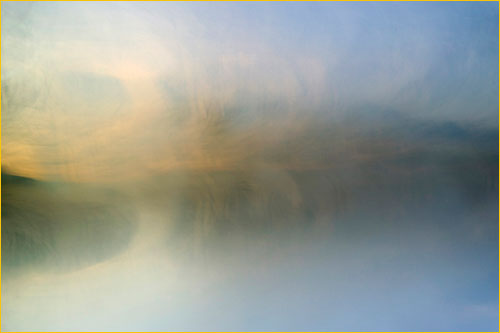
First Light, Dumfries & Galloway, Scotland – ISO 50, f32, 0.6s, 50mm
But as the ideas flowed and new methods developed I have retained my passion that the image is created at a given time and location – an expression of the light falling on a location at a single given moment. As such these new works by both Morag and myself are created in camera in a single release of the shutter. Whilst respecting the wonders of Photoshop my technique begins and ends with very simple adjustments, with my aim to recreate a finished result not dissimilar in appearance to a high contrast slow slide film, slightly underexposed to increase saturation.
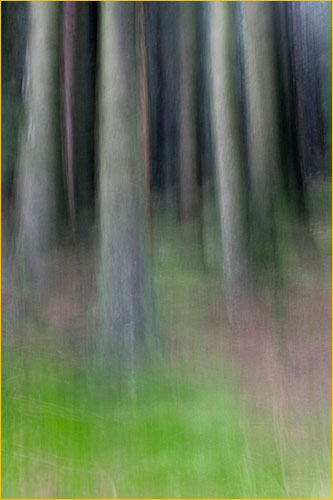
Untitled, Galloway, Scotland – ISO 50, f9, 2.5s, 70-200mm
I am now working in collaboration with Morag who has developed the technique every bit as much as I have and who is now an immensely competent photographer. Together we have refined our method of approach so instead of heading out into the field as individuals we now work together, developing ideas and techniques jointly towards the final composition. In this way we have removed any competitive element to our work in favour of joint discovery. Back in the (digital) darkroom we then further collude to hone the final print and as such consider that each image is a collaborative work rather than on produced by either of us individually.
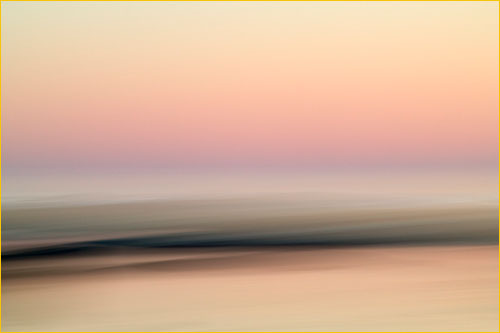
Reflecting on Light II, Ayrshire, Scotland – ISO 50, f14, 0.5s, 70-200mm
The images presented here are by Ted Leeming & Morag Paterson.
Whilst developing this approach for ourselves we have realised that there are a number of photographers
also creating bodies of work using similar or alternative techniques.
If interested you can find more images on our website atwww.leemingpaterson.com
or try the website of the great William Neill or the book “Photo Impressionism” by Freeman Patterson & Andre Gallant.
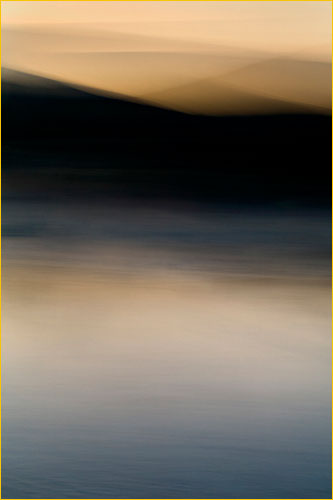
Untitled, Galloway, Scotland – ISO50, f32, 1.6s, 70-200mm
February, 2010
You May Also Enjoy...
Camera Raw
Redefining Digital Image ProcessingEvery now and then a product comes along that either redefines a market, or how things are done. Such a product is
